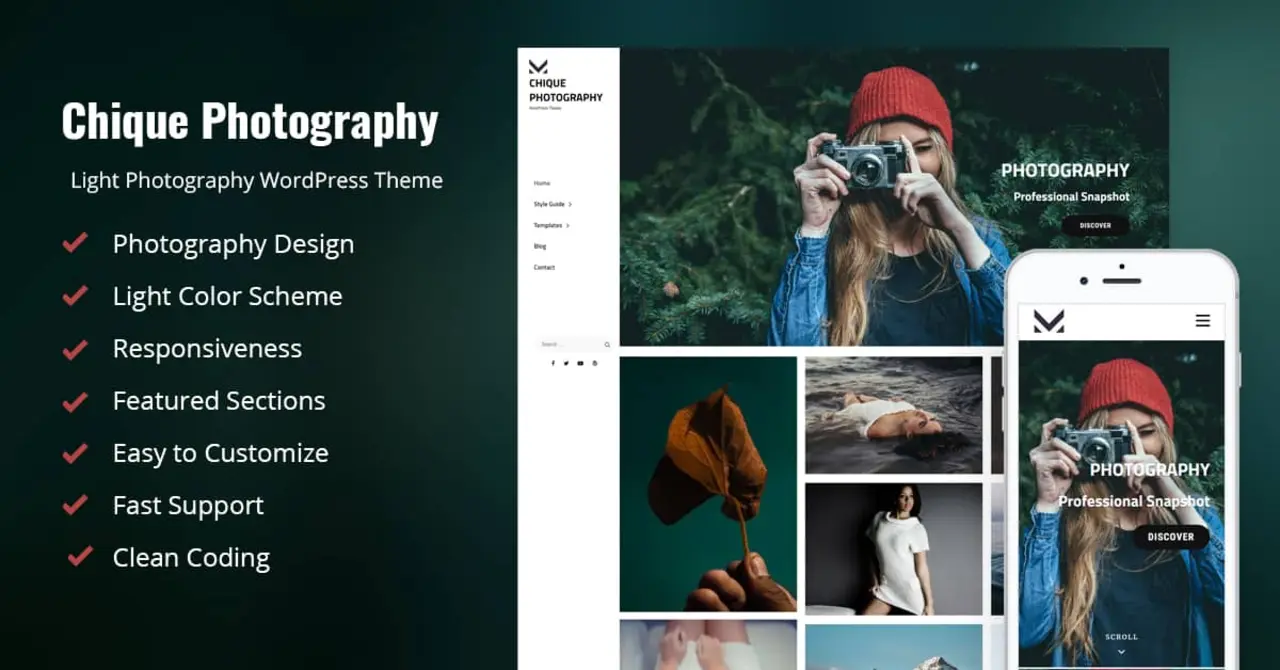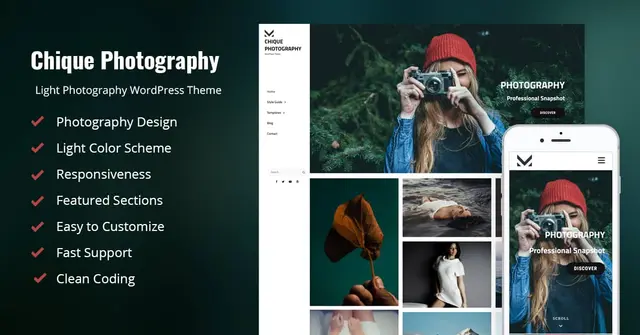A Captivating Home Page
Your photography website should have a captivating home page that showcases your best work and immediately grabs the attention of your visitors. This is your chance to make a strong first impression, so carefully curate your best images and present them in a visually appealing way.
It is essential to have a clean and easy-to-navigate layout, as well as a responsive design that looks great on any device. A well-organized home page will help your visitors quickly find the information they need, making it more likely that they will stay on your site and explore your portfolio.
Portfolio Section
A dedicated portfolio section is a must-have for any photography website. This is where you will showcase your best work and demonstrate your unique style and skill as a photographer. Your portfolio should be organized into categories, such as portraits, landscapes, or weddings, so that visitors can easily find the type of photography they are interested in.
Make sure that each image in your portfolio is high-quality and properly optimized for web viewing. Consider including a brief description or caption for each photo, explaining the story behind it or providing some insight into your creative process. This will give your visitors a deeper understanding of your work and help them connect with you as an artist.
About Me Page
One of the most important sections of your photography website is the "About Me" page. This is where you tell your story and share your passion for photography with your visitors. Include a professional-looking headshot, a brief bio, and some personal anecdotes to help your audience get to know you and understand why you love what you do.
Your "About Me" page should also include information about your experience, education, and any awards or recognition you have received in your field. This will help to establish your credibility as a professional photographer and reassure potential clients that they are making the right choice by working with you.
Contact Information and Booking Form
Make it easy for potential clients to get in touch with you by including clear and visible contact information on your website. This can be in the form of a dedicated "Contact" page or by incorporating your contact details into the footer or header of your site. Be sure to provide multiple ways for people to reach you, such as an email address, phone number, and social media profiles.
Additionally, consider adding a booking form to your website, allowing visitors to inquire about your availability and request your services directly. This not only makes it convenient for potential clients to get in touch with you but also helps to streamline your booking process and keep your schedule organized.
Client Testimonials and Reviews
Incorporating client testimonials and reviews into your photography website is a great way to build trust with potential clients and showcase your skills as a photographer. Positive feedback from happy clients can be a powerful marketing tool, as it provides social proof of your abilities and helps to reassure new clients that they are making the right choice by hiring you. Consider including a dedicated "Testimonials" or "Reviews" section on your site, or incorporate quotes from satisfied clients throughout your site's design.
To encourage clients to leave reviews, consider sending a follow-up email after a photoshoot, thanking them for their business and kindly requesting that they leave a review on your website or social media profiles.
Blog and Educational Content
Adding a blog to your photography website is an excellent way to engage with your audience, showcase your expertise, and improve your site's search engine optimization (SEO). By regularly publishing informative and interesting content, you can establish yourself as an authority in your field and provide valuable resources for your clients and other photographers.
Your blog can include behind-the-scenes stories from your photoshoots, photography tips and tutorials, gear reviews, or updates about your latest projects. Educational content not only helps to engage your audience but can also demonstrate your knowledge and experience, further establishing your credibility as a professional photographer.
Social Media Integration
Finally, make sure to integrate your social media profiles into your photography website. This not only makes it easy for your visitors to find and follow you on different platforms but also helps to increase your online presence and reach a wider audience. Consider adding social media buttons in the header or footer of your site, and embedding your Instagram feed or Facebook posts directly into your website's design.
By regularly sharing your work and engaging with your followers on social media, you can build a loyal fan base and attract new clients to your photography business.

